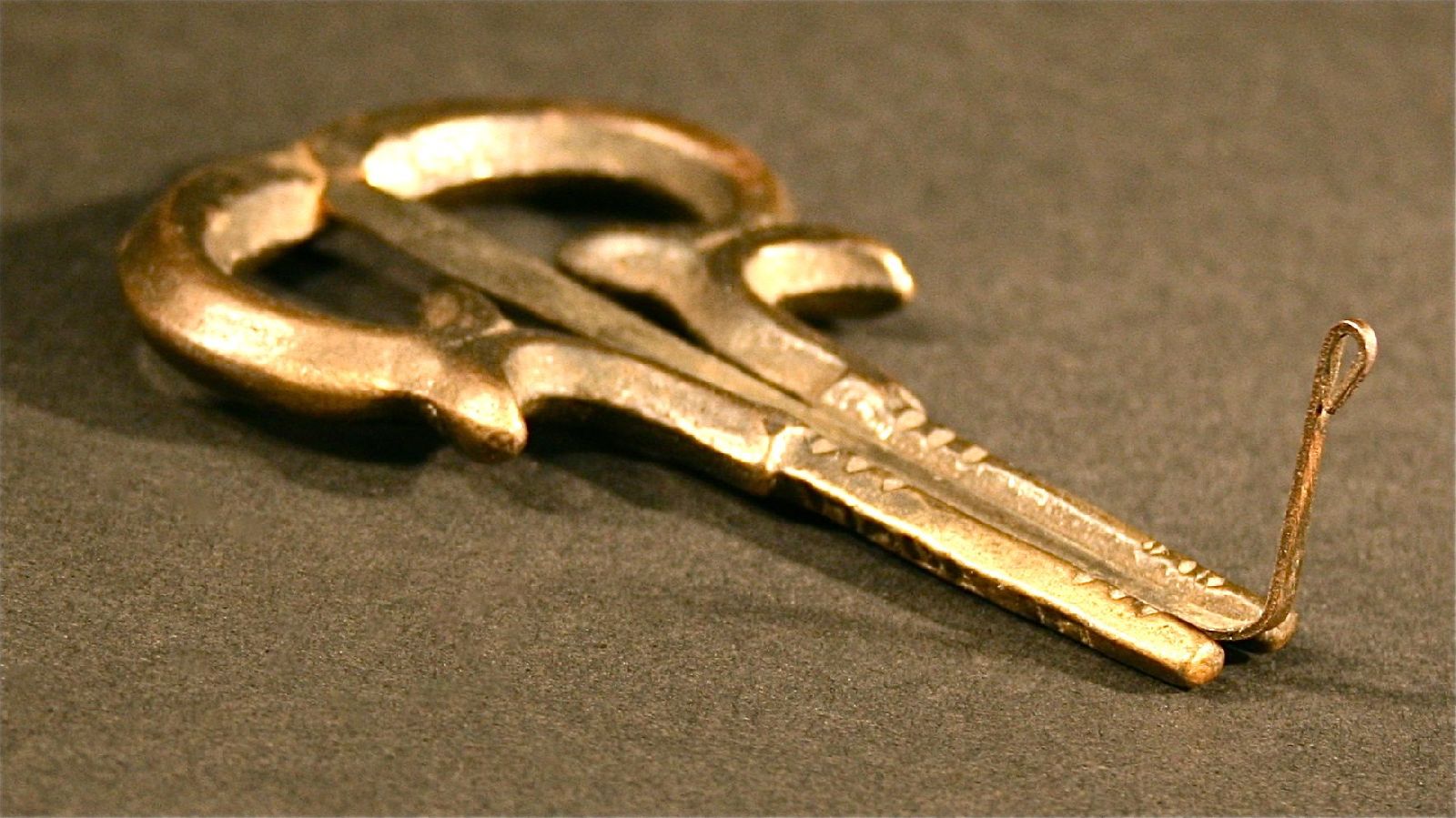

Title: Antique Musical Instrument Plucked Idiophone Mouth Jaw Harp
Shipping: $19.00
Artist: N/A
Period: 19th Century
History: N/A
Origin: N/A
Condition: Excellent
Item Date: 1860 to 1920
Item ID: 5289
Musical instrument also called a jew's-harp. This old example still has it's steel vibrator. This harp is in excellent condition. This is a nice old Jaw Harp. The music is made by the vibrating of the tongue on the instrument. It measures about 2" across and it is about 3" long. It looks to me like it is hand forged. Nice detailed piece with very nice dark patina. Not sure on exact date but many of this quality date to civil war era.
Link: http://en.wikipedia.org/wiki/Jew%27s_harp
The Jew's harp, jaw harp, mouth harp, Ozark harp, trump or juice harp, is a lamellophone instrument, which is in the category of plucked idiophones: it consists of a flexible metal or bamboo tongue or reed attached to a frame. The tongue/reed is placed in the performer's mouth and plucked with the finger to produce a note.
This instrument is thought to be one of the oldest musical instruments in the world; a musician apparently playing it can be seen in a Chinese drawing from the 4th century BC. Despite its common English name, and the sometimes used Jew's trump, it has no particular connection with the Jewish people or Judaism. This instrument is native to Asia and used in all tribes of Turkic peoples in Asia where it is variously referred to as a temir komuz (literally, iron komuz), agiz komuzu (literally, mouth komuz), gubuz or doromb.
The instrument is known in many different cultures by many different names. The common English name "Jew's harp" may be considered controversial or potentially misleading, and is thus avoided by some speakers. Other speakers believe the avoidance of the term to be offensive and deliberately use the term so as not to cause offense. Another name used to identify the instrument, especially in scholarly literature, is the older English trump, while guimbarde, the French word for the instrument, can be found in unabridged dictionaries and is featured in recent revival efforts.
Since trances are facilitated by droning sounds,[3] the Jew's harp has been associated with magic and has been a common instrument in shamanic rituals.[4]
The temir komuz is made of iron usually with a length of 100- 200mm and with a width of approximately 2- 7mm. The range of the instrument varies with the size of the instrument, but generally hovers around an octave span. The Kirgiz people are unusually proficient on the temir komuz instrument and it is quite popular among children. However, some adults continue to play the instrument. There is a National Artist of Kyrgyz Republic who performs on the instrument, temir komuz. One time twenty Kirgiz girls played in a temir komuz ensemble on the stage of the Bolshoi Theater in Moscow. Temir komuz pieces was notated by Zataevich in two or three parts. Apparently an octave drone is possible, or even an ostinato alternating the fifth step of a scale with an octave.[5]
There are many theories for the origin of the name Jew's harp. One proposed explanation is that it is a corruption of "jaws harp", while a less likely explanation espoused by some is that its name comes from "juice harp" from the amount of saliva produced when played by inexperienced players. While the "jaw" variant is attested at least as early as 1774[6] and 1809[7], the "juice" variant appeared only in the late 19th and 20th centuries. It has also been suggested that the name derives from the French "Jeu-trompe" meaning "toy-trumpet".[8]
The Oxford English Dictionary calls theories that the name is a corruption of "jaws" or "jeu" "baseless and inept" and goes on to say, "More or less satisfactory reasons may be conjectured: e.g. that the instrument was actually made, sold, or sent to England by Jews, or supposed to be so; or that it was attributed to them, as a good commercial name, suggesting the trumps and harps mentioned in the Bible."[